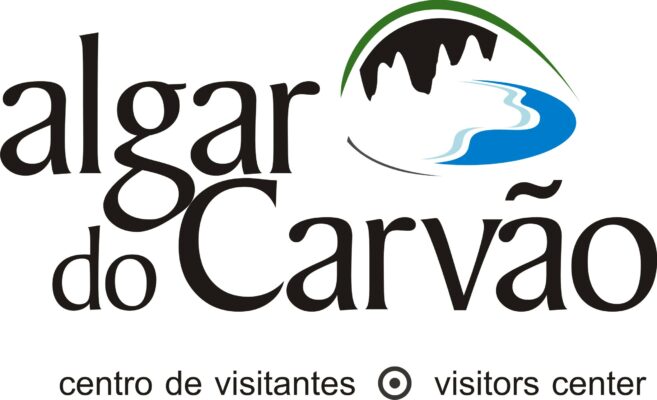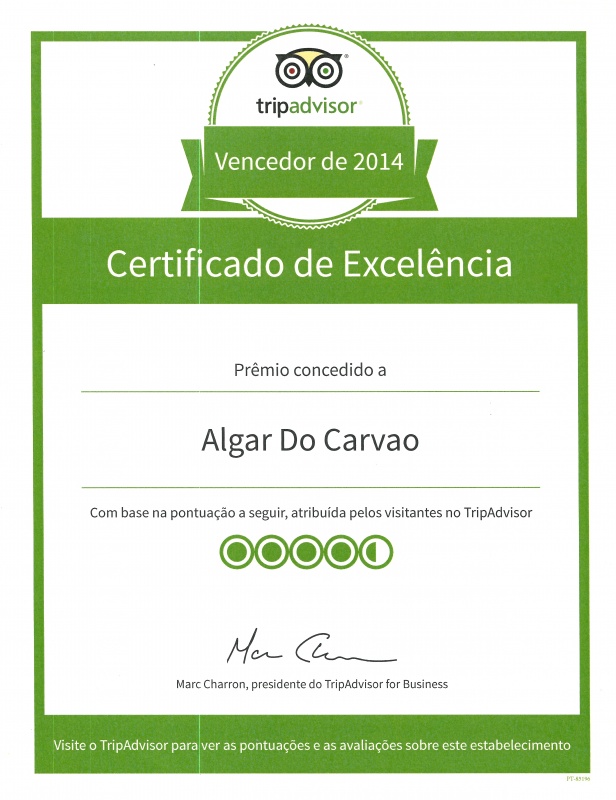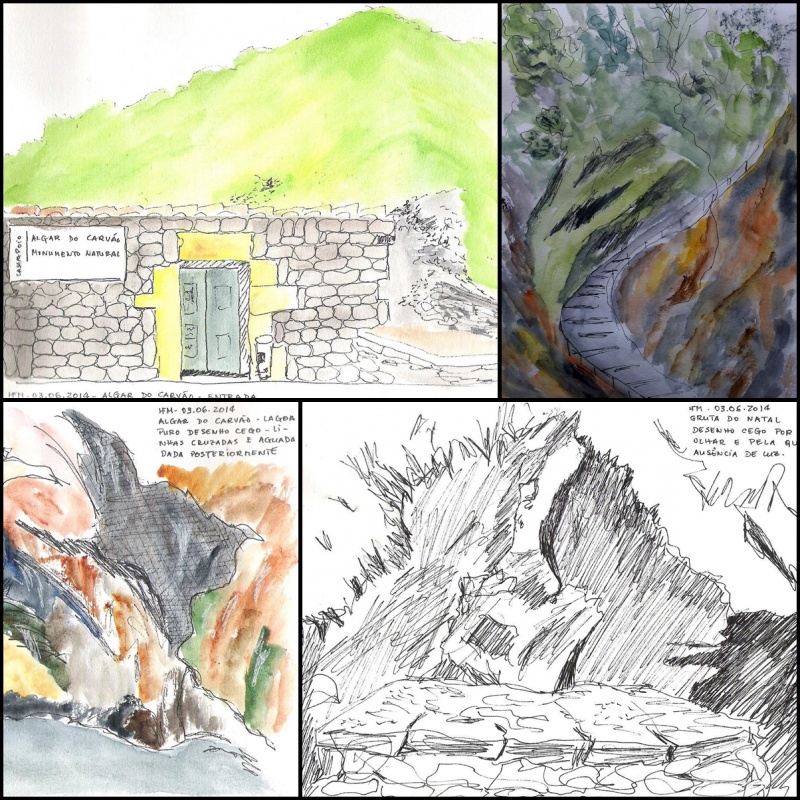ALGAR DO CARVÃO AND ITS VISITORS CENTRE ARE CLOSED DUE TO CONSTRUCTION, SINCE OCTOBER 20th, 2024.
the construction OF “CAVE – azorean voLCANO sPELEOLOGICAL CENTER” OF ALGAR DO CARVÃO will take approximately 18 months.
3. RULES OF ACCESSIBILITY:
WARNINGS AND RECOMMENDATIONS IN GENERAL:
- Terceira island has been experiencing an above-normal seismic crisis for several months. Your visit to these caves is at your own risk.
- The visit is about 30 minutes.
- The air relative humidity is always very high (above 90%), so it is constantly dripping water inside the cave.
- The descent to the interior of Algar do Carvão is along two tunnels, and inside the cave there are several staircases to different balconies (338 steps in total). It has concrete floors.
- Not recommended for people with physical limitations (if so, notify reception).
- It’s advised the use of suitable footwear (sneakers, boots).
- Appropriate clothing is recommended (hiking equipment).
- Not recommended for toddlers or babies.
- Not recommended for pregnant women at an advanced stage of pregnancy.
- The collection / destruction of geological samples is prohibited.
- The use of tripods is prohibited (except with a prior authorization by Montanheiros Association Direction).
- It is forbidden to smoke and eat inside the cave.
- It is forbiden to swim in the lake.
- It is forbidden to be accompanied by pets.
- In case of doubts, visitors should clarify them at the reception or with the guide inside the cave.
4. TICKETS ACQUISITION | FREE ENTRIES
- Tickets cost €10.00 per person, a combined ticket (Algar do Carvão + Natal Cave) is €15.00.
- Entries and ticket purchases are processed during the schedules stipulated by Montanheiros Association, these schedules are at the Algar do Carvão visitor’s center door, as well as on the official website and official Facebook pages. Extraordinary openings comply with the regulations already established, see above. Opening hours and days may be subject to change without notice.
- The purchase of tickets and procedures to access the cave are made at the visitors center reception in first come, first served basis and there is single queue. There is no priority for those who already have a combined ticket, for organized groups or others groups with free entrance.
- The maximum number of persons inside the cave is 150.
- The are free entries for Montanheiros members (+ guest) with membership fees paid, children under the age of 12 accompanied by a paying adult and tour guides.
- The maximum limit for free entries is 50 persons per day.
- Groups requesting free entries must request a visit at least 48 hours in advance (approval subject to availability and cave restrictions). Priority is given to schools and groups from the Azores (Colleges / Schools (except higher education) / Daily Centers for the elderly or needy people / ATLs / Scout groups / Firefighters Brigades). Companions of these groups (family members) should not be allowed to enter free of charge.
- Requests for collaboration with public or private entities will be analyzed on a case-by-case basis.
- Requests that do not meet these criteria, the decision will always be taken by the Association’s Direction.
5. CONTACTS
ENTRIES ON CREDIT (Send prior info: Tax number | Address | Group Names | File or Voucher number | Paxs):
INFO | SPECIAL VISITATIONS REQUESTS | AUTHORIZATIONS:
[/col_inner] [/row_inner]

The great eruption, known as “do Pico Alto”, which occurred north of the existing Guilherme Moniz volcanic apparatus, spilled its lava a great distance away. Later, a new eruption, this time basaltic, tore through the ground and began a process that would lead to the formation of a strombolian volcano – The Pico do Carvão. In a first phase, by forcing and trying to break the trachyte spill, already existing and constituting a natural barrier of not very “cooperating” consistency, it formed the lagoon area and the two vaults over it. Later, in a new attempt to escape, the basaltic lavas broke through the current chimney to the outside. In its final phase, the magma descended into the deeper chutes and the magma chamber, giving rise, this almost instantaneous absence of magma, to the formation of the Algar itself.
The very effusive lava flows produced rivers of very fluid acidic lava that charred existing vegetation. The dating of one of the fossils formed then, gives Algar do Carvão an age of 2148 (+ or – 115 years).
Location
The volcanic cone, that lodges Algar do Carvão, is located sensibly in the middle of Terceira island, north of the city of Angra do Heroísmo, about 12 km away by road.
The access is easy, using the public road network that has sufficient signaling for the effect. It has a geographical position of coordinates 38°43’41.54 “N 27°12’59.01 “W and an elevation of approximately 640 m.
The First Descents
The first known account of a descent to Algar do Carvão dates from January 26, 1893, with the use of a rope, carried out by Cândido Corvelo and José Luís Sequeira. A second descent was made by Didier Couto, in 1934, who drew up the first profile of the Algar.
Only on August 18, 1963, organized descents into the interior of the Pit began, by a group of enthusiasts, who later would organize themselves into an association called “Os Montanheiros”, using a more elaborate system. With recourse to more efficient portable lighting systems, it was possible to progress in the Algar in order to explore it until the remotest and tiniest hole. With the collection of elements fallen on the ground it was possible to bring to daylight and to everyone’s eyes a sample of some of the materials that make up the cave.
After the first descents, and with the patrimonial value that they had recognized in this cave, they decided that something so beautiful and rare should be shared with many others. The system of descent, through the mouth of the Algar, did not make this task feasible, as it took almost a day to get 6 to 8 people down and up. Even so, many were the expeditions carried out for this purpose, and on weekends they moved dozens of people each time.
A more functional solution, to take the people interested inside Algar, was however in sight.
The Tunnel and the Stairs
With the Montanheiros already constituted, topographical surveys were done for the opening of a tunnel, in order to allow easy access for those who wanted to visit and study this Algar.
Beginning on May 28, 1965 and running until November 28, 1966, on weekends and holidays, the Montanheiros were able to tear a 44-meter tunnel into the interior of the algar, which was later enlarged and consolidated in concrete.
Staircases were built inside, initially in wood to allow access to the lower part of the algar. Several acts of vandalism totally destroyed these interior stairs. Later, in 1977, the current concrete staircase was built, with a total length of 300 meters, repaved and extended in 2003.
Algar’s Donation
The value and merit that the Associação Os Montanheiros showed throughout this long period of expeditions to the Algar, namely with the opening of the tunnel and the construction of the road, did not go unnoticed by the owner of the land, with whom the Montanheiros had a friendly relationship, and who had verbally authorized all these actions. It is therefore not surprising that on November 30, 1973, a portion of that land, which sheltered the tunnel, was donated by José Ataíde da Câmara and his wife to the Montanheiros. The strip of land, where the Montanheiros had torn off the access, was also donated, deriving from the Caminho do Cabrito, which facilitated the arrival at Pico do Carvão and which has now become a public domain path.
Geological interest
Not infrequently the interior of our volcanic cavities has beautiful natural scenery. In this respect Algar do Carvão is the most expressive example in the Azores.
It is a remarkable volcanic chimney, which unlike what usually happens in other cases is not completely blocked. With a 15 X 20 meters crater it ends 90 m down in a clear water lagoon.
As the water seeps through the rocks and slag, it dissolves and is enriched in ferric and silica minerals. As it is released, precipitating into the lagoon, it deposits minerals in the form of milky white amorphous silica stalactites and stalagmites or reddish ferric veins in the vaults, interior walls and floors, some producing, by oxidation, limonite deposits. This fact makes the two innermost vaults distinct: on the lagoon the silica predominates and on the “stage” the ferric deposits predominate. It has also been advanced the hypothesis that the siliceous formations are related to the presence of diatoms, which have silica in their structure.
It is also possible to observe some basalt layers that manage to remain coalescent to the trachytic walls; black enameled formations covering some walls or forming hanging blades; lava flows that occurred before the total solidification of the lava or by refusion mechanisms of the walls.
The lagoon with a surface of at most 400 squared meters, fed by rainfall infiltration and some small springs immersed in the lagoon, reaches a maximum depth of 15 meters. In low rainfall years it dries up almost completely. A fossil of a seabird perfectly preserved and covered with silica was found at the bottom of the lagoon. This lagoon, with the other formations of the cave that surround it, brings an additional beauty to the whole.
Because of what it can be observed and the questions it raises, its geological importance has been noted by several national and foreign specialists.
Algar do Carvão is a site of geological interest, being a geosite of the Azores Geopark (https://www.azoresgeopark.com/ ) and was a finalist in the “7 Maravilhas Naturais de Portugal” (7 Natural Wonders of Portugal) contest.
Fauna and Flora
The beauty of this Algar is also shown in the vegetation that covers the interior of the cone, which is a very characteristic habitat – a volcanic chimney. The light intensity always reveals itself as a limiting factor to the distribution of plant species. Although the plant communities develop up to about 64 meters below the mouth, life nevertheless fills the entire cave, with the presence of algae and molds.
On the perimeter that surrounds the “mouth” of the creek, we have a tree community composed of species such as Ilex perado, Erica azorica, Laurus azorica, Vaccinium cylindraceum, some ferns such as Blechnum spicant, Polypodium macaronesicum, Culcita macrocarpa and Elaphoglossum hirtum along with several bryophytes, mostly epiphytes on the tree/shrub species found here. Then we move to a herbaceous stratum, with Lysimachia azorica, Hedera helix, several Carex, Leontodon rigens, Luzula purpureo-splendens and Prunella vulgaris. Again several species of mosses and liverworts are present. In a lower area we have only ferns and some bryophytes. Biodiversity drops considerably. Finally, in the penumbra, only diatom algae and chlorophytes and molds remain.
In terms of vertebrate fauna, it is possible to observe different birds that seek refuge here. A night visit provides a good opportunity to observe birds such as the sparrow (Passer domesticus), the blackbird (Turdus merula azorensis) and the chaffinch (Fringila coelebs). Occasionally rabbits are observed inside the algar, killed as a result of falling through the crater. There are no records of rats, bats or any other vertebrates. However, at the level of cave arthropods, the Algar possesses a considerable wealth, with several troglobic species identified.
Social Manifestations
The search for new stages, with exotic scenery, was perhaps the main reason that very varied social activities have been held at times in the past.
The algar has already seen, on public display, the performance of several choral groups and popular music groups, as well as the celebration of Eucharist inside.
We can also mention that several times this space was the target of attention of television producers of different nationalities, in order to make reports and documentaries.
Visits to Algar do Carvão
É possívIt is possible to visit Algar do Carvão all year round, either in low season, with weekly openings on fixed days, or in high season, with daily openings.el visitar o Algar do Carvão durante todo o ano, quer na época baixa, com aberturas semanais com dias fixos e quer na época alta, com aberturas diárias.

Tripadvisor Certificate of Excellence 2014
ALGAR DO CARVÃO

An urban sketcher’s view of Algar do Carvão and Gruta do Natal, by Helena Monteiro
1 jun 2014

 Português
Português